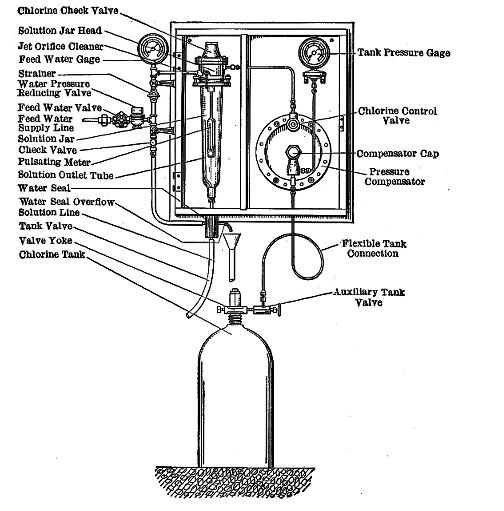|
Mundaring Weir
Mundaring Weir is a concrete gravity dam (and historically the adjoining locality) located from Perth, Western Australia in the Darling Scarp. The dam and reservoir form the boundary between the suburbs of Reservoir and Sawyers Valley. The dam impounds the Helena River. History A soldier, Ensign Robert Dale, became the first European to explore the region in 1829. European populations did not grow significantly until construction of the dam in the late 1890s. This involved the building of a Mundaring Weir railway line from Mundaring to the Mundaring Weir site. The Irish Australian engineer C. Y. O'Connor was involved in the design of a scheme that transported water to the Eastern Goldfields of Coolgardie and Kalgoorlie in the eastern part of Western Australia. The weir was completed in 1903. The lake created by the dam was known as the Helena River Reservoir, it was renamed as Lake C.Y. O'Connor in 2004. The owner of the dam, the Water Corporation, refers to th ... [...More Info...] [...Related Items...] OR: [Wikipedia] [Google] [Baidu] |
Geoscience Australia
Geoscience Australia is a statutory agency of the Government of Australia that carries out geoscientific research. The agency is the government's technical adviser on aspects of geoscience, and serves as the repository of geographic and geological data collated by the Commonwealth. On a user pays basis, the agency offers geospatial services, including topographic maps and satellite imagery. It is also a major contributor to the Australian Government's free, open data collections such as and . Strategic priorities The agency has six strategic priority areas: # building Australia's resource wealth in order to maximise benefits from Australia's minerals and energy resources, now and into the future; # ensuring Australia's community safety so that Australian communities are more resilient to natural hazards; # securing Australia's water resources in order to optimise and sustain the use of Australia's water resources; # managing Australia's marine jurisdictions in order to m ... [...More Info...] [...Related Items...] OR: [Wikipedia] [Google] [Baidu] |
Australian Railway History
''Australian Railway History'' is a monthly magazine covering railway history in Australia, published by the New South Wales Division of the Australian Railway Historical Society on behalf of its state and territory Divisions. History and profile It was first published in 1937 as the ''Australasian Railway and Locomotive Historical Society Bulletin''. It was renamed ''ARHS Bulletin'' in 1952. In January 2004, the magazine was re-branded as ''Australian Railway History''. Historically, the magazine had a mix of articles dealing with historical material and items on current events drawn from its affiliate publications. Today, it contains only historical articles, two or three of them being in-depth. References Publication details *''Australian Railway History: bulletin of the Australian Railway Historical Society'' Redfern, New South Wales Vol. 55, no. 795 (Jan. 2004)- *''Bulletin (Australian Railway Historical Society The Australian Railway Historical Society (AR ... [...More Info...] [...Related Items...] OR: [Wikipedia] [Google] [Baidu] |
Garratt Locomotive
A Garratt locomotive is a type of articulated steam locomotive invented by the engineer Herbert William Garratt that is articulated into three parts. Its boiler, firebox, and cab are mounted on a centre frame or "bridge". The two other parts, one at each end, have a pivot to support the central frame; they consist of a steam engine unit – with driving wheels, trailing wheels, valve gear, and cylinders, and above it, fuel and/or water storage. Articulation permits locomotives to negotiate curves that might restrict large rigid-framed locomotives. The design also provides more driving wheels per unit of locomotive weight, permitting operation on lightly engineered track. Garratt locomotives produced as much as twice the tractive effortTractive effort is not the same as power: it is the measurement of a force, whereas power is the rate of doing work. The locomotive with the highest tractive effort is not necessarily the most powerful. of the largest conventional locomotiv ... [...More Info...] [...Related Items...] OR: [Wikipedia] [Google] [Baidu] |
WAGR Msa Class
The WAGR Msa class was a class of Garratt articulated steam locomotives. The class was built at the Midland Railway Workshops and operated by the Western Australian Government Railways (WAGR) between 1930 and 1963. It was the first Garatt type to be designed and constructed entirely in Australia. History The class was preceded on the WAGR system by the M/Ms class Garratts. The class were used extensively on WAGR lines with light rails and sharp curves, as a consequence many of the smaller older branch lines on the Darling Scarp; as well as those with steep inclines such as those on the Mundaring Weir, Nannup, and Flinders Bay lines. In their later years, the boiler pressure was reduced to match that of the M/Ms class. By this stage they had been concentrated on the Bunbury to Boyup Brook and Pinjarra to Boddington lines. Contrary to popular belief, the last Msa was not accidentally cut up. In 1951, the Commissioner of Railways issued a directive to the Chief Mechanical ... [...More Info...] [...Related Items...] OR: [Wikipedia] [Google] [Baidu] |
Zig Zag (railway)
A railway zig zag or switchback is a railway operation in which a train is required to switch its direction of travel in order to continue its journey. While this may be required purely from an operations standpoint, it is also ideal for climbing steep gradients with minimal need for tunnels and heavy earthworks. For a short distance (corresponding to the middle leg of the letter "Z"), the direction of travel is reversed, before the original direction is resumed. Some switchbacks do not come in pairs, and the train may then need to travel backwards for a considerable distance. A location on railways constructed by using a zig-zag alignment at which trains must reverse direction to continue is a reversing station. One of the best examples is the Darjeeling Himalayan Railway, a UNESCO World Heritage Site railway in India, which has six full zig zags and three Spiral (railway), spirals. Advantages Zig zags tend to be cheaper to construct because the grades required are di ... [...More Info...] [...Related Items...] OR: [Wikipedia] [Google] [Baidu] |
Public Works Department (Western Australia)
The Public Works Department (PWD) was the state government agency of Western Australia responsible for providing and maintaining public infrastructure such as dams, water supplies, schools, hospitals, harbours and other public buildings. The department is no longer operational, having its responsibilities reassigned to other Government of Western Australia, state government departments and corporate entities since 1985. History The history of the department is difficult to accurately describe given the broad range of tasks performed by the department and also the evolutionary development of the organisation. The department was instrumental in the success of Western Australia, aiding in transforming it from a colonial settlement to a prosperous state. Given the remoteness of Western Australia, the importance of the P.W.D. with its self-sufficient design and construction skills will probably never be fully appreciated. Pre P.W.D. Construction of infrastructure in the Swan Riv ... [...More Info...] [...Related Items...] OR: [Wikipedia] [Google] [Baidu] |
Fluoridation
Water fluoridation is the controlled addition of fluoride to public water supplies to reduce tooth decay. Fluoridated water maintains fluoride levels effective for cavity prevention, achieved naturally or through supplementation. In the mouth, fluoride slows tooth enamel demineralization and enhances remineralization in early-stage cavities. Defluoridation is necessary when natural fluoride exceeds recommended limits. The World Health Organization (WHO) recommends fluoride levels of 0.5–1.5 mg/L, depending on climate and other factors. In the U.S., the recommended level has been 0.7 mg/L since 2015, lowered from 1.2 mg/L. Bottled water often has unknown fluoride levels. Tooth decay affects 60–90% of schoolchildren worldwide. Fluoridation reduces cavities in children, with Cochrane reviews estimating reductions of 35% in baby teeth and 26% in permanent teeth when no other fluoride sources are available, though efficacy in adults is less clear. In Europe ... [...More Info...] [...Related Items...] OR: [Wikipedia] [Google] [Baidu] |
Water Chlorination
Water chlorination is the process of adding chlorine or chlorine compounds such as sodium hypochlorite to water. This method is used to kill bacteria, viruses and other microbes in water. In particular, chlorination is used to prevent the spread of waterborne diseases such as cholera, dysentery, and typhoid. History In a paper published in 1894, it was formally proposed to add chlorine to water to render it "germ-free". Two other authorities endorsed this proposal and published it in many other papers in 1895. Early attempts at implementing water chlorination at a water treatment plant were made in 1893 in Hamburg, Germany. In 1897 the town of Maidstone, England was the first to have its entire water supply treated with chlorine. Permanent water chlorination began in 1905, when a faulty slow sand filter and a contaminated water supply caused a serious typhoid fever epidemic in Lincoln, England. Alexander Cruickshank Houston used chlorination of the water to stop the epidem ... [...More Info...] [...Related Items...] OR: [Wikipedia] [Google] [Baidu] |
Daily News (Perth, Western Australia)
The ''Daily News'', historically a successor of ''The Inquirer'' and ''The Inquirer and Commercial News'', was an afternoon daily English language newspaper published in Perth, Western Australia, from 1882 to 1990, though its origin is traceable from 1840. History One of the early newspapers of the Western Australian colony was '' The Inquirer'', established by Francis Lochee and William Tanner on 5 August 1840. Lochee became sole proprietor and editor in 1843 until May 1847 when he sold the operation to the paper's former compositor Edmund Stirling. In July 1855, ''The Inquirer'' merged with the recently established ''Commercial News and Shipping Gazette'', owned by Robert John Sholl, as '' The Inquirer & Commercial News''. It ran under the joint ownership of Stirling and Sholl. Sholl departed and, from April 1873, the paper was produced by Stirling and his three sons, trading as Stirling & Sons. Edmund Stirling retired five years later and his three sons took control as S ... [...More Info...] [...Related Items...] OR: [Wikipedia] [Google] [Baidu] |
Western Mail (Western Australia)
''The Western Mail'', or ''Western Mail'', was the name of two weekly newspapers published in Perth, Western Australia. Published 1885–1955 The first ''Western Mail'' was published on 19 December 1885 by Charles Harper and John Winthrop Hackett, co-owners of ''The West Australian'', the state's major daily paper. It was printed by James Gibney at the paper's office in St Georges Terrace. In 1901, in the publication ''Twentieth century impressions of Western Australia'', a history of the early days of the ''West Australian'' and the ''Western Mail'' was published. In the 1920s ''The West Australian'' employed its first permanent photographer Fred Flood, many of whose photographs were featured in the ''Western Mail''. In 1933 it celebrated its first use of photographs in 1897 in a ''West Australian'' article. The ''Western Mail'' featured early work from many prominent West Australian authors and artists, including Mary Durack, Elizabeth Durack, May Gibbs, Stan ... [...More Info...] [...Related Items...] OR: [Wikipedia] [Google] [Baidu] |






